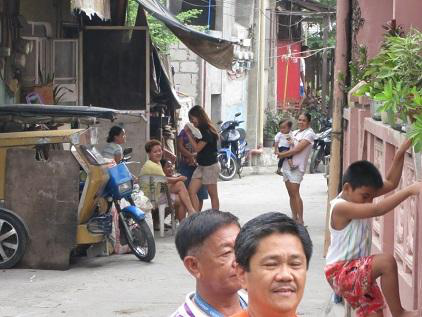
Strategies at the national and local levels are crucial to help communities around the world reduce their risk of disaster (Photo: UNISDR)
By Andy McElroy
CANCUN, Mexico, 25 May 2017 – The 2017 Global Platform for Disaster Risk Reduction today urged countries and cities to develop clear, aligned, integrated and supported DRR strategies in order to move forward on the Sendai Framework.
Such national and local government strategies require dedicated budgetary support with a particular focus at the municipal level to empower and resource DRR at the frontline.
Capacity building of institutions and line ministries to adopt a cross-sectoral approach to disaster resilience was identified as critical. The need for greater leadership, participation and risk awareness involving women, elderly, and children as well as other often marginalized groups was also highlighted.
The recommendations were delivered by Mr. Kiren Rijuju, the Minister of State Home Affairs, India, in his capacity as Chair of the opening plenary session on national and local DRR strategies.
“I have travelled around India and witnessed many disasters. I have learnt that it is particularly important to empower local governments and give them appropriate support,” Minister Rijiju said.
Target (e) of the Sendai Framework for Disaster Risk Reduction 2015-2030 calls for a substantial increase in the number of countries with national and local disaster risk reduction strategies by 2020.
The plenary heard how effective national and local disaster risk reduction strategies ‘builds resilience into the very bricks and mortar’ of cities and nations around the world.
Ms. Kathy Oldham, Head of Service, Association of Greater Manchester Authorities’ Civil Contingencies & Resilience Unit, UK, said: “Our cities are complex, home to multiple interests and stakeholders. A strategy offers a way of collapsing all these interests down into structures and mechanisms that can ensure DRR is at the heart of what everyone does.
“However, strategies by themselves are not enough. Having the mechanisms for following up on strategic commitments, tracking implementation and assessing impact on the ground are important.
“Good governance is about collaboration and inclusivity. An all-of-society approach should hear and consider the perspectives of all groups within our communities.”
Mr. Joaquin Roa, Minister of the National Emergency Secretariat, Paraguay, told the plenary how a Presidential Decree in his country requires all government ministries and sectors to ‘on a daily basis introduce the Sendai Framework into their work in order to manage disaster risk’.
“We are on the right path to not creating new risk by deeply involving key sectors such as various utilities and infrastructure as well as other actors, academia and institutions. This goes hand-in-hand with strong leadership to build a healthy resilience,” Minister Roa said.
Ms. Denisse Ugalde Alegría, Mayor of Tlalnnepantly, Mexico, said it was the responsibility of local government as the ones ‘closest to citizens and communities to coordinate governance’ to strengthen the disaster resilience of people.
Dr. Melchior Mataki, Permanent Secretary, Ministry of Environment, Solomon Islands, told the plenary that good DRR strategies were made from a proactive developmental perspective. “The decisions we make today will determine the new set of risks or otherwise tomorrow.”
Mr. Christos Stylianides, EU Commissioner for Humanitarian Aid and Crisis Management relayed the experience of the EU’s 28 member states in that DRR strategies are not abstract concepts.
“They are practical solutions which deliver concrete results to support the implementation of the Sendai Framework. DRR strategies are about saving lives, reducing economic losses, protecting livelihoods, protecting people’s homes and the schools that our children learn in,” Mr Stylianides said.
Around 75 percent of countries globally have some sort of national level disaster risk reduction legislation, strategy or plan. However, many are not aligned with the Sendai Framework. As of 2016, 51 countries did not have any kind of national level DRR strategy.
Date:
25 May 2017
Sources:
United Nations Office for Disaster Risk Reduction (UNISDR)
Themes:
Community-based DRR, Urban Risk & Planning, Governance, Disaster Risk Management